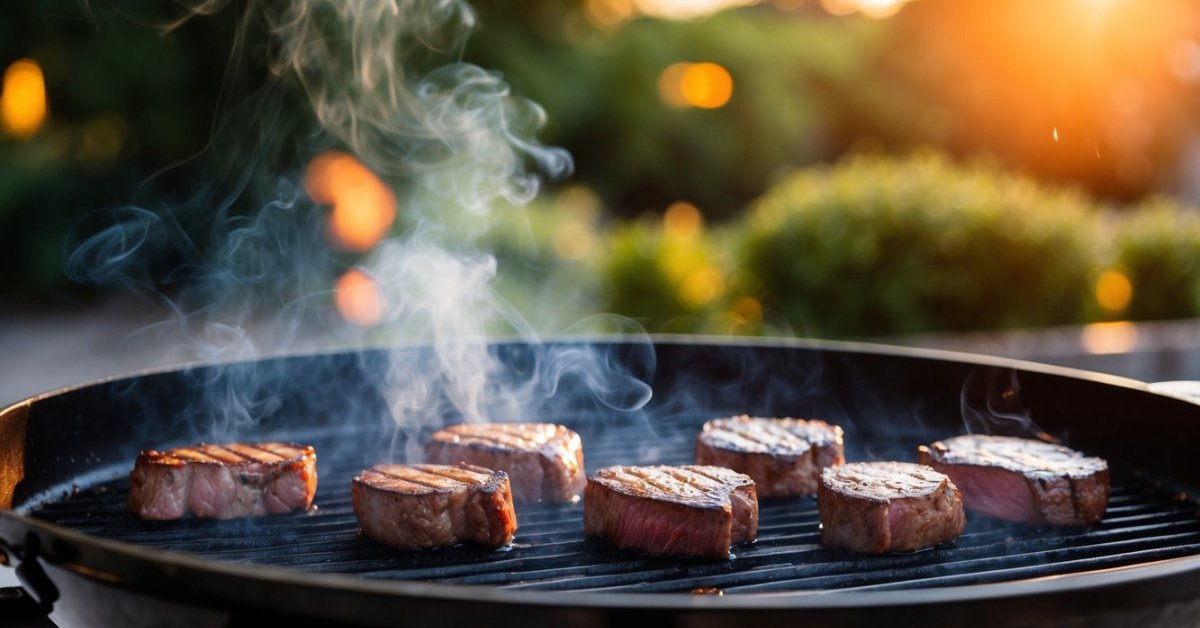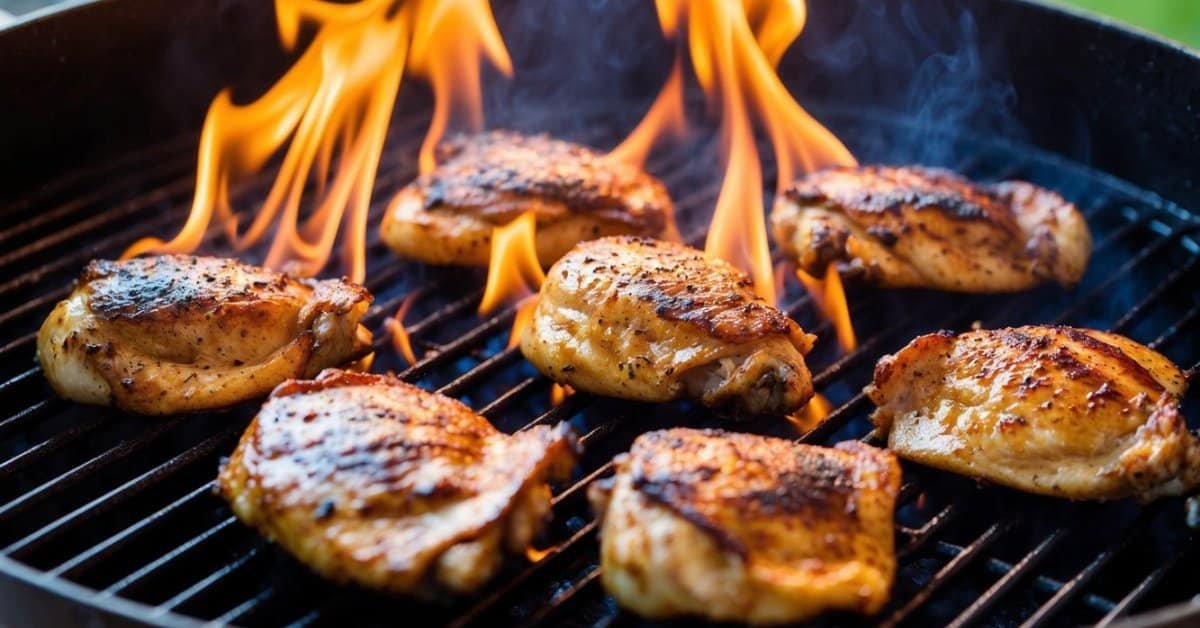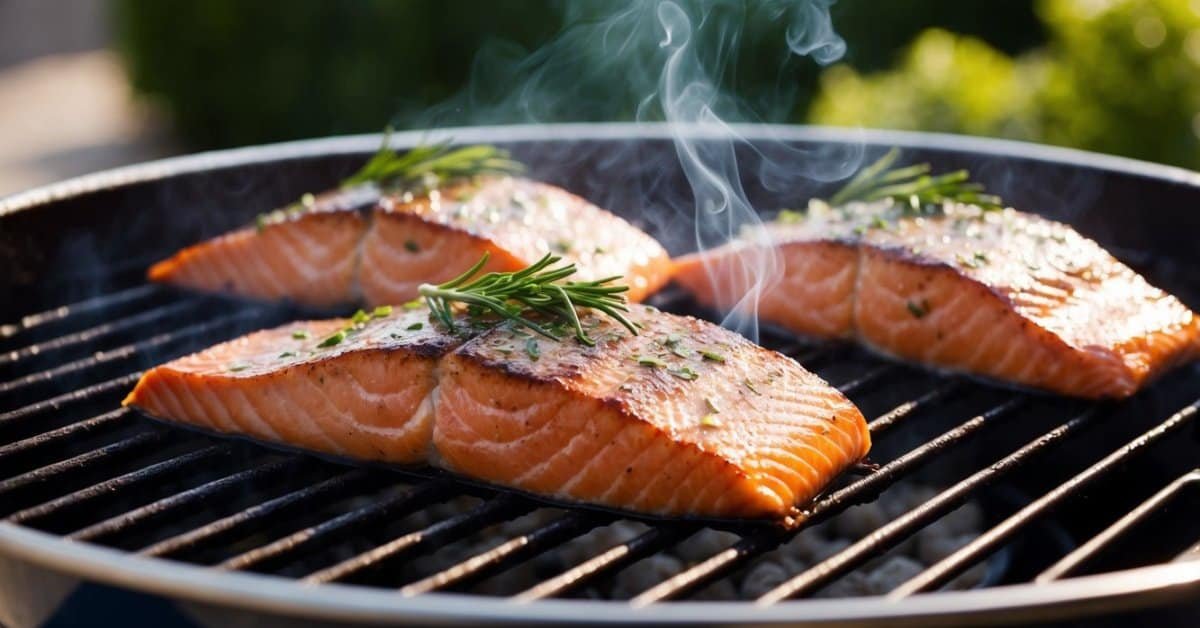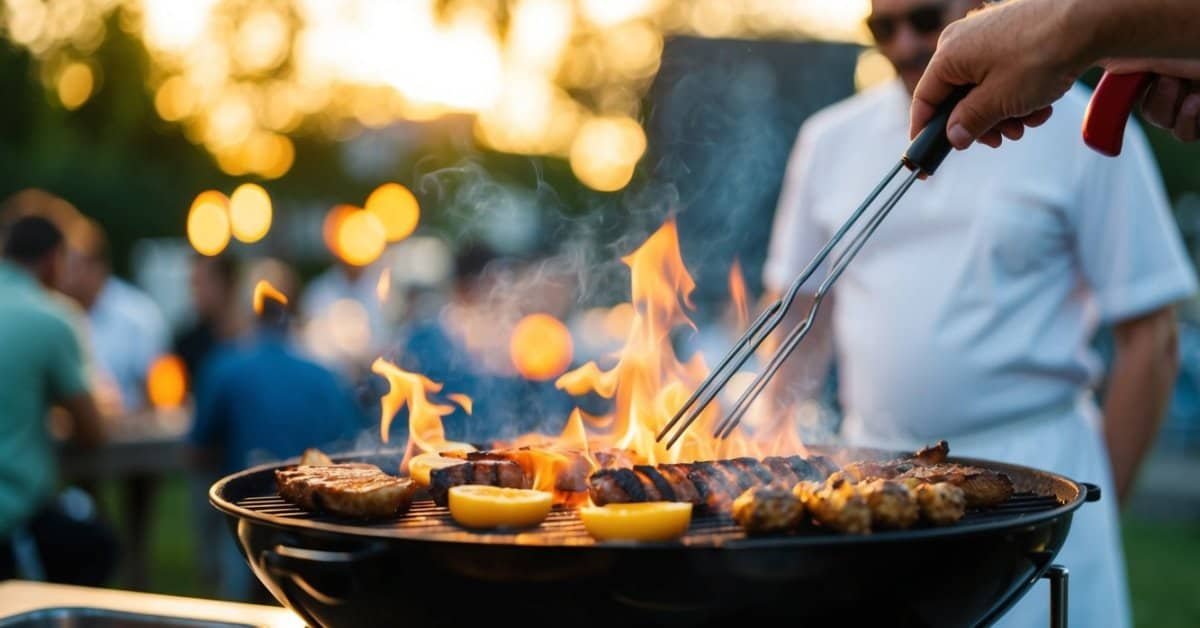Grilling with friends and family is a fantastic way to enjoy the outdoors and delicious food. I love hosting BBQs, but making sure everyone stays safe from foodborne illnesses is always on my mind. It’s not just about the taste, but also about keeping our gatherings healthy and happy.

From handling raw meats to keeping things at the right temperature, there are simple steps we can take to prevent any unwanted surprises. Let’s dive into some easy tips that will help make your next BBQ both tasty and safe for everyone involved.
Understanding Foodborne Illness
Foodborne illnesses occur when contaminated food is consumed. Pathogens such as bacteria, viruses, and parasites cause these illnesses. Common bacteria include Salmonella, E. coli, and Listeria. Viruses like Norovirus also contribute to foodborne outbreaks.
Common Pathogens
- Salmonella: Found in raw poultry, eggs, and unpasteurized dairy products.
- E. coli: Present in undercooked beef, especially ground beef, and contaminated vegetables.
- Listeria: Found in deli meats, soft cheeses, and unpasteurized products.
- Norovirus: Often spreads through contaminated shellfish and produce.
Symptoms of Foodborne Illness
Symptoms typically appear within hours to days after eating contaminated food. They include:
- Nausea
- Vomiting
- Diarrhea
- Abdominal pain
- Fever
Impact on Health
Foodborne illnesses can range from mild discomfort to severe health issues. Vulnerable groups include the elderly, young children, pregnant women, and individuals with weakened immune systems. Preventing these illnesses ensures a safe and enjoyable BBQ experience for everyone.
Statistics
| Pathogen | Common Sources | Estimated Cases Annually in the US |
|---|---|---|
| Salmonella | Raw poultry, eggs, dairy products | 1.35 million |
| E. coli | Underprocessed beef, contaminated veggies | 73,000 |
| Listeria | Deli meats, soft cheeses, unpasteurized products | 1,600 |
| Norovirus | Contaminated shellfish, produce | 19 million |
Understanding these pathogens and their sources helps in implementing effective prevention strategies at your BBQ.
Proper Food Handling
Proper food handling ensures safety and enjoyment at BBQs. Implement these practices to minimize the risk of foodborne illnesses.
Temperature Control
Temperature control is crucial for preventing bacterial growth. Maintain hot foods above 140°F and cold foods below 40°F. Use a food thermometer to verify internal temperatures:
- Cooking: Ensure meats reach safe internal temperatures (e.g., 165°F for poultry, 160°F for ground beef).
- Holding: Keep cooked food warm above 140°F until serving.
- Cooling: Refrigerate perishable items within two hours of cooking.
Preventing Cross-Contamination
- Utensils: Use separate knives and cutting boards for raw meats and vegetables.
- Storage: Store raw meats on the lowest shelves in the refrigerator to prevent drips.
- Serving: Use clean plates for cooked food and refrain from placing them on surfaces used for raw ingredients.
Safe Cooking Practices
Ensuring your BBQ is safe involves following essential cooking practices. These steps help prevent foodborne illnesses and guarantee a delightful experience for everyone.
Cooking to Safe Temperatures
Cooking meats to the right temperatures eliminates harmful pathogens. I use a food thermometer to check that:
- Poultry reaches at least 165°F
- Beef, pork, and lamb attain 145°F with a three-minute rest
- Ground meats hit 160°F
- Fish reaches 145°F
Maintaining these temperatures ensures that Salmonella, E. coli, and other bacteria are effectively destroyed, providing peace of mind during your BBQ.
Using Clean Equipment
Clean equipment is vital for preventing cross-contamination. I follow these steps to keep everything sanitary:
- Wash utensils and surfaces with hot, soapy water before and after handling raw meats
- Use separate cutting boards for raw and cooked foods
- Sanitize grill grates by scrubbing them with a grill brush before cooking
- Store clean plates and serving utensils away from raw ingredients
By maintaining clean equipment, I minimize the risk of transferring harmful bacteria from raw to cooked foods, ensuring a safe and enjoyable meal for all guests.
Storage and Leftovers
Proper storage of leftovers keeps everyone safe and the food tasty. I make sure to handle leftovers correctly to prevent any risk of foodborne illness.
Refrigeration Guidelines
Store perishable foods within two hours of cooking. Keep your refrigerator at or below 40°F (4°C):
- Containers: Use shallow, airtight containers to cool food quickly.
- Organization: Place raw meats on the lowest shelves to avoid drips onto other foods.
- Labeling: Date leftovers and consume them within three days to ensure freshness.
Reheating Techniques
- Microwave: Cover the food, stir halfway through, and check for even heating.
- Oven: Preheat to 350°F (175°C) and heat for 20 minutes or until the food is steaming.
- Stovetop: Bring the food to a rolling boil, stirring frequently to ensure it heats evenly.
Hygiene and Sanitation
Maintaining proper hygiene and sanitation is essential to prevent foodborne illnesses at BBQs. I follow these key practices to ensure a safe cooking environment:
Handwashing
I wash my hands with soap and water for at least 20 seconds before handling food, after touching raw meats, and after using the restroom. This simple step reduces the risk of transferring harmful pathogens.
Clean Surfaces
I sanitize all countertops, cutting boards, and utensils before and after preparing food. Using hot, soapy water followed by a disinfectant ensures surfaces remain free from bacteria.
Utensils and Equipment
I use separate cutting boards and utensils for raw and cooked foods to avoid cross-contamination. Grill grates are cleaned with a brush and washed with hot, soapy water or a grill cleaner before cooking.

Personal Hygiene
« Delicious Bacon-Wrapped Dates with Blue Cheese on the Grill: Easy Gourmet Recipe
Electric Grill vs. Gas: Which Is Better for Your Grilling Needs? »
I keep hair tied back and avoid touching my face and hair while preparing food. Wearing clean clothing and, if necessary, gloves when handling ready-to-eat foods further minimizes contamination risks.
Food Storage
I store perishable foods at or below 40°F and keep hot foods above 140°F. Using shallow containers helps foods cool quickly, preventing bacterial growth. Leftovers are refrigerated promptly and labeled with dates to ensure freshness.
Sanitizing Tools
I ensure all utensils, plates, and serving tools are thoroughly washed and sanitized before use. This practice eliminates any lingering bacteria that could contaminate prepared foods.
By adhering to these hygiene and sanitation practices, I create a safe and enjoyable BBQ experience for everyone.
Conclusion
Hosting BBQs is one of my favorite ways to connect with friends and family. By keeping a few simple safety practices in mind we can ensure everyone enjoys delicious and healthy meals together. It’s all about mindful handling proper cooking and maintaining cleanliness. Let’s make every BBQ a memorable and safe experience for everyone involved.














